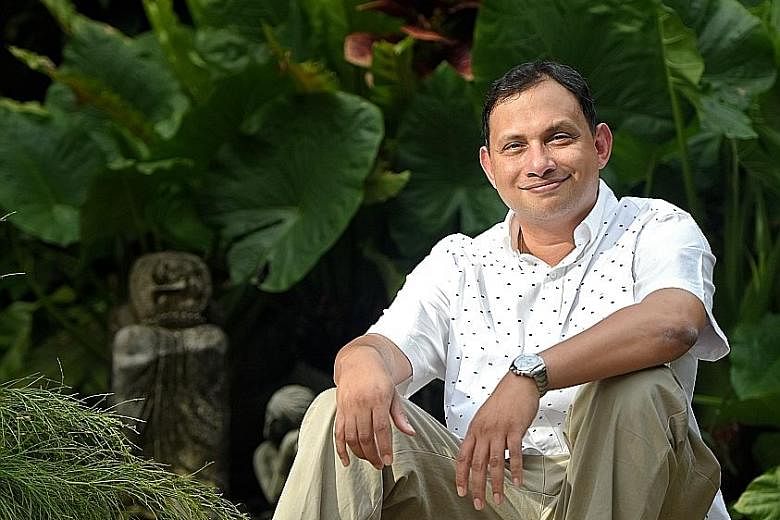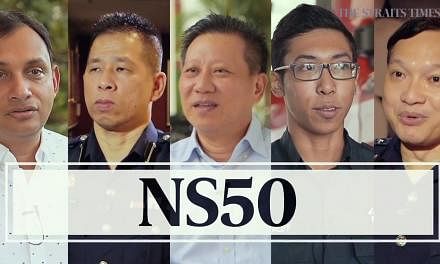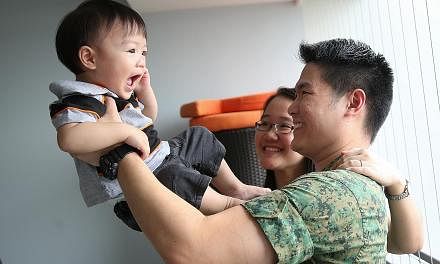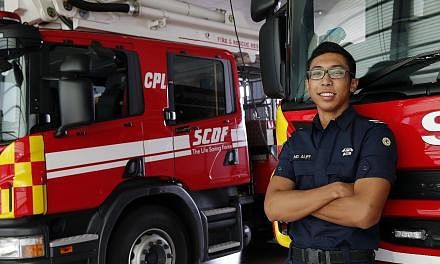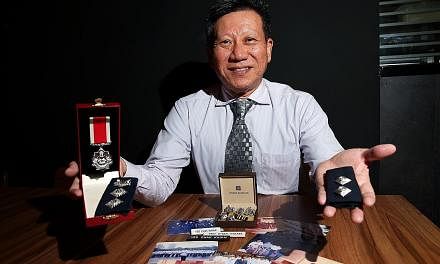For more than a decade, Lieutenant-Colonel (NS) Mohan Tiru was ready to leave the country at a moment's notice when disaster struck the region.
Although the 50-year-old completed his reservist last year, the black bag he took on such trips, stocked with items such as a Swiss army knife, water bottle and mosquito coils, still sits in his home.
Dr Mohan, an emergency physician at Changi General Hospital, was among the Singapore Civil Defence Force's (SCDF) operationally ready national servicemen involved in Operation Lionheart overseas missions, which consist mostly of SCDF regulars.
He enlisted in 1985 and vividly recalls his first humanitarian trip with the force: to the coastal area of Khao Lak in Thailand after the 2004 tsunami.
Being among the first wave of about 40 responders from Singapore a day after the disaster, he arrived to a beachfront where hotels had been reduced to rubble, as rescue officers were kept on their toes for signs of aftershocks. There was no escaping the smell of death.
"The most poignant thing I remember was stacks and stacks of coffins made from cupboards, destroyed furniture," he said of the situation about a week after the magnitude-9.1 earthquake struck beneath the Indian Ocean near Indonesia.
It triggered the massive tsunami, which killed 230,000 to 280,000 people across the region.
As rescue efforts began, the bodies started coming in. Piled about three to four levels high, the coffins were "like Lego bricks", stretching for about 50m to 100m, he said.
Dr Mohan's team spent 14 days in the area, helping locals recover dead bodies from the rubble and trying to locate as many Singaporeans as possible. As a husband whose wife was pregnant with their second child back then, seeing young families and children who had lost their lives hit him hard.
There were other challenges.
"We had to learn a lot very quickly and be able to adapt to the situation," he said of getting to search-and-rescue work, as well as medical relief, within minutes of reaching an area. "The clock starts ticking once disaster strikes, and time is against you."
He has since been on three other Lionheart missions - in Pakistan in 2005, Indonesia in 2006 and New Zealand in 2011, which all followed earthquakes.
Being an emergency physician, he found it a natural progression to move into disaster work, and is thankful for being able to do it with his family's blessings.
"I was lucky to find a vocation in NS that reflected what I did in civilian life, and what I had passion for."
Seow Bei Yi
